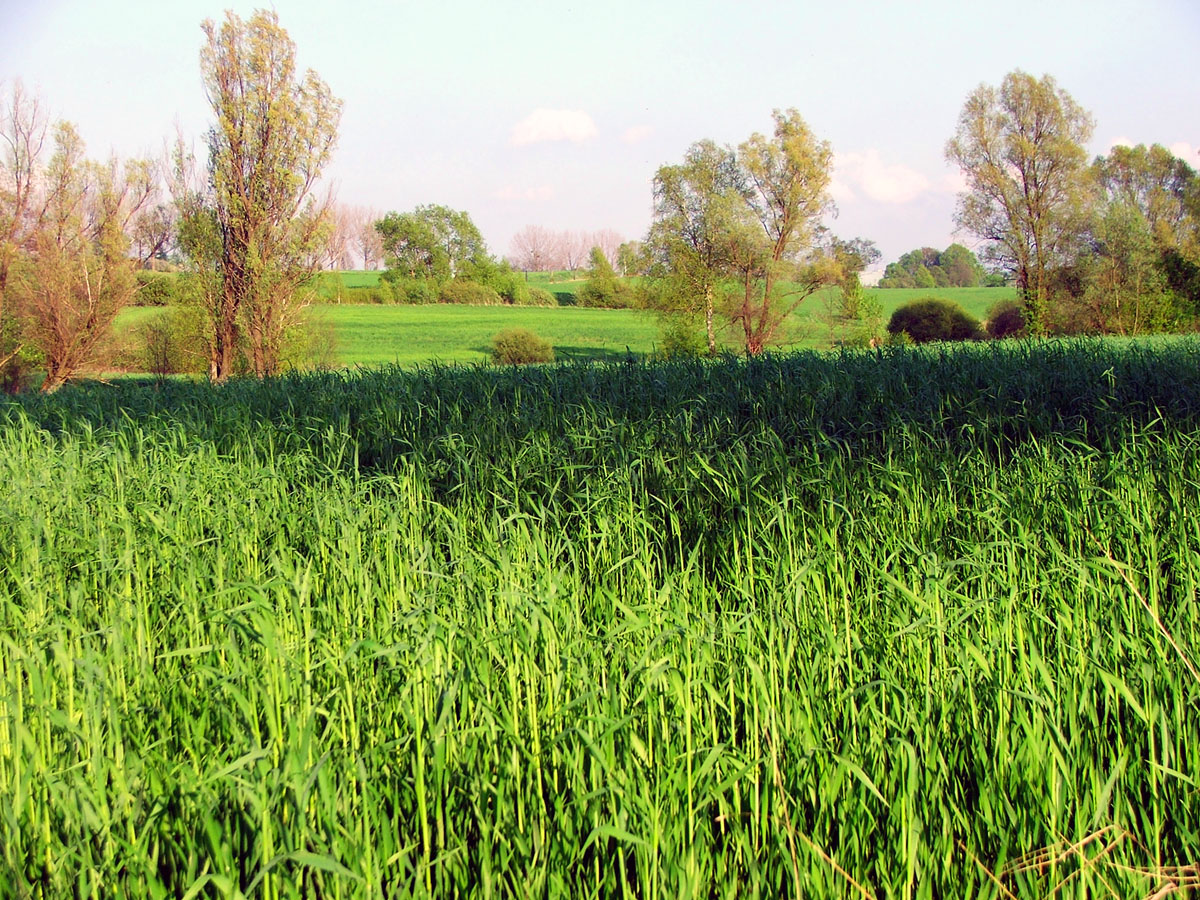|
EPN (insecticide)
EPN is an insecticide of the phosphonothioate class. It is used against pests such as European corn borer, rice stem borer, bollworm, tobacco budworm, and boll weevil. Available forms EPN is available in two forms, EPN( ''O''-ethyl ''O-p''-nitrophenyl phenylphosphonothionate) and EPNO (''O''-ethyl ''O-p''-nitrophenyl phenylphosphonate). EPNO differs from EPN by having an oxygen atom in place of the sulfur atom. Both these compounds have a (+)- and a (−)-isomer. There is no apparent differences in the rate of hydrolysis of these isomers, but the (+)-isomer of both EPN and EPNO is more toxic to house flies. While the (+)- and (−)-isomers, and the racemic mixture of both isomers of EPN, are equally toxic to mice. The (+)-isomer of EPNO is more toxic to mice than the (−)-EPNO isomer. Mechanism of action EPN, via its oxygen analog EPNO generated by metabolism, causes delayed neurotoxicity. It is an acetylcholinesterase inhibitor, acetylcholinesterase (AChE) inhibitor. AChE is a ... [...More Info...] [...Related Items...] OR: [Wikipedia] [Google] [Baidu] |
National Institute For Occupational Safety And Health
The National Institute for Occupational Safety and Health (NIOSH, ) is the United States federal agency responsible for conducting research and making recommendations for the prevention of work-related injury and illness. NIOSH is part of the Centers for Disease Control and Prevention (CDC) within the U.S. Department of Health and Human Services. Despite its name, it is not part of the National Institutes of Health. Its current director is John Howard. NIOSH is headquartered in Washington, D.C., with research laboratories and offices in Cincinnati, Ohio; Morgantown, West Virginia; Pittsburgh, Pennsylvania; Denver, Colorado; Anchorage, Alaska; Spokane, Washington; and Atlanta, Georgia. NIOSH is a professionally diverse organization with a staff of 1,200 people representing a wide range of disciplines including epidemiology, medicine, industrial hygiene, safety, psychology, engineering, chemistry, and statistics. The Occupational Safety and Health Act, signed by President Rich ... [...More Info...] [...Related Items...] OR: [Wikipedia] [Google] [Baidu] |
Insecticide
Insecticides are substances used to kill insects. They include ovicides and larvicides used against insect eggs and larvae, respectively. Insecticides are used in agriculture, medicine, industry and by consumers. Insecticides are claimed to be a major factor behind the increase in the 20th-century's agricultural productivity. Nearly all insecticides have the potential to significantly alter ecosystems; many are toxic to humans and/or animals; some become concentrated as they spread along the food chain. Insecticides can be classified into two major groups: systemic insecticides, which have residual or long term activity; and contact insecticides, which have no residual activity. The mode of action describes how the pesticide kills or inactivates a pest. It provides another way of classifying insecticides. Mode of action can be important in understanding whether an insecticide will be toxic to unrelated species, such as fish, birds and mammals. Insecticides may be repellent ... [...More Info...] [...Related Items...] OR: [Wikipedia] [Google] [Baidu] |
Phosphonothioate
In organic chemistry, organophosphates (also known as phosphate esters, or OPEs) are a class of organophosphorus compounds with the general structure , a central phosphate molecule with alkyl or aromatic substituents. They can be considered as esters of phosphoric acid. Like most functional groups, organophosphates occur in a diverse range of forms, with important examples including key biomolecules such as DNA, RNA and ATP, as well as many insecticides, herbicides, nerve agents and flame retardants. OPEs have been widely used in various products as flame retardants, plasticizers, and performance additives to engine oil. The popularity of OPEs as flame retardants came as a substitution for the highly regulated brominated flame retardants. The low cost of production and compatibility to diverse polymers made OPEs to be widely used in industry including textile, furniture, electronics as plasticizers and flame retardants. These compounds are added to the final product phy ... [...More Info...] [...Related Items...] OR: [Wikipedia] [Google] [Baidu] |
European Corn Borer
The European corn borer (''Ostrinia nubilalis''), also known as the European corn worm or European high-flyer, is a moth of the family Crambidae which includes other grass moths. It is a pest of grain, particularly maize (''Zea mays''). The insect is native to Europe, originally infesting varieties of millet, including broom corn. The European corn borer was first reported in North America in 1917 in Massachusetts, but was probably introduced from Europe several years earlier. Since its initial discovery in the Americas, the insect has spread into Canada and westward across the United States to the Rocky Mountains. The adult European corn borer is about long with a wingspan. The female is light yellowish brown with dark, irregular, wavy bands across the wings. The male is slightly smaller and darker. European corn borer caterpillars damage corn by chewing tunnels through many parts of the plant. This decreases agricultural yield. Geographic range The European corn borer i ... [...More Info...] [...Related Items...] OR: [Wikipedia] [Google] [Baidu] |
Rice Stem Borer
Rice is the seed of the grass species ''Oryza sativa'' (Asian rice) or less commonly ''Oryza glaberrima'' (African rice). The name wild rice is usually used for species of the genera ''Zizania'' and ''Porteresia'', both wild and domesticated, although the term may also be used for primitive or uncultivated varieties of ''Oryza''. As a cereal grain, domesticated rice is the most widely consumed staple food for over half of the world's human population,Abstract, "Rice feeds more than half the world's population." especially in Asia and Africa. It is the agricultural commodity with the third-highest worldwide production, after sugarcane and maize. Since sizable portions of sugarcane and maize crops are used for purposes other than human consumption, rice is the most important food crop with regard to human nutrition and caloric intake, providing more than one-fifth of the calories consumed worldwide by humans. There are many varieties of rice and culinary preferences tend to v ... [...More Info...] [...Related Items...] OR: [Wikipedia] [Google] [Baidu] |
Bollworm
Bollworm is the common term for a moth larva that attacks the fruiting bodies of certain crops, especially cotton. The most common moths known as bollworms are: * Red or Sudan bollworm, '' Diparopsis castanea'' * Rough bollworm, '' Earias perhuegeli'' * Spotted bollworm, '' Earias fabia'' * Spiny bollworm, ''Earias insulana'' * Spotted bollworm, '' Earias vittella'' * American cotton bollworm or tomato grub, ''Helicoverpa armigera'' * Cotton bollworm, '' Helicoverpa gelotopoeon'' * Cotton bollworm, ''Helicoverpa punctigera'' * Corn earworm, ''Helicoverpa zea'' * Tobacco budworm, ''Heliothis virescens'' * Pink bollworm, ''Pectinophora gossypiella'' * Pinkspotted bollworm, '' Pectinophora scutigera'' See also *Cotton bollworm *Boll weevil The boll weevil (''Anthonomus grandis'') is a beetle that feeds on cotton buds and flowers. Thought to be native to Central Mexico, it migrated into the United States from Mexico in the late 19th century and had infested all U.S. cotton-growin ... [...More Info...] [...Related Items...] OR: [Wikipedia] [Google] [Baidu] |
Tobacco Budworm
''Helicoverpa armigera'' is a species of Lepidoptera in the family Noctuidae. It is known as the cotton bollworm, corn earworm, Old World (African) bollworm, or scarce bordered straw (the lattermost in the UK, where it is a migrant). The larvae feed on a wide range of plants, including many important cultivated crops. It is a major pest in cotton and one of the most polyphagous and cosmopolitan distribution, cosmopolitan Pest (organism), pest species. It should not be confused with the similarly named larva of the related species ''Helicoverpa zea''. Distribution This species comprises two sub-species: ''Helicoverpa armigera armigera'' is native and widespread in central and southern Europe, temperate Asia and Africa; ''Helicoverpa armigera conferta'' is native to Australia, and Oceania. The former sub-species has also recently been confirmed to have successfully invaded Brazil and has since spread across much of South America and reached the Caribbean. It is a migrant species, ab ... [...More Info...] [...Related Items...] OR: [Wikipedia] [Google] [Baidu] |
Boll Weevil
The boll weevil (''Anthonomus grandis'') is a beetle that feeds on cotton buds and flowers. Thought to be native to Central Mexico, it migrated into the United States from Mexico in the late 19th century and had infested all U.S. cotton-growing areas by the 1920s, devastating the industry and the people working in the American South. During the late 20th century, it became a serious pest in South America as well. Since 1978, the Boll Weevil Eradication Program in the U.S. allowed full-scale cultivation to resume in many regions. Description The adult insect has a long snout, a grayish color, and is usually less than in length. Lifecycle 1) Back view of adult; 2) side view of adult; 3) egg; 4) side view of larva; 5) ventral view of pupa; 6) adult, with wings spread Adult weevils overwinter in well-drained areas in or near cotton fields, and farms after diapause. They emerge and enter cotton fields from early spring through midsummer, with peak emergence in late spring, and fe ... [...More Info...] [...Related Items...] OR: [Wikipedia] [Google] [Baidu] |
Racemic Mixture
In chemistry, a racemic mixture, or racemate (), is one that has equal amounts of left- and right-handed enantiomers of a chiral molecule or salt. Racemic mixtures are rare in nature, but many compounds are produced industrially as racemates. History The first known racemic mixture was racemic acid, which Louis Pasteur found to be a mixture of the two enantiomeric isomers of tartaric acid. He manually separated the crystals of a mixture by hand, starting from an aqueous solution of the sodium ammonium salt of racemate tartaric acid. Pasteur benefited from the fact that ammonium tartrate salt that gives enantiomeric crystals with distinct crystal forms (at 77 °F). Reasoning from the macroscopic scale down to the molecular, he reckoned that the molecules had to have non-superimposable mirror images. A sample with only a single enantiomer is an ''enantiomerically pure'' or ''enantiopure'' compound. Etymology From racemic acid found in grapes; from Latin ''racemus'', meani ... [...More Info...] [...Related Items...] OR: [Wikipedia] [Google] [Baidu] |
Acetylcholinesterase Inhibitor
Acetylcholinesterase inhibitors (AChEIs) also often called cholinesterase inhibitors, inhibit the enzyme acetylcholinesterase from breaking down the neurotransmitter acetylcholine into choline and acetate, thereby increasing both the level and duration of action of acetylcholine in the central nervous system, autonomic ganglia and neuromuscular junctions, which are rich in acetylcholine receptors. Acetylcholinesterase inhibitors are one of two types of cholinesterase inhibitors; the other being butyryl-cholinesterase inhibitors. Acetylcholinesterase is the primary member of the cholinesterase enzyme family. Acetylcholinesterase inhibitors are classified as reversible, irreversible, or quasi-irreversible (also called pseudo-irreversible). Mechanism of action Organophosphates Organophosphates like TEPP and sarin inhibit cholinesterases, enzymes that hydrolyze the neurotransmitter acetylcholine. The active centre of cholinesterases feature two important sites, namely the a ... [...More Info...] [...Related Items...] OR: [Wikipedia] [Google] [Baidu] |
Phenol
Phenol (also called carbolic acid) is an aromatic organic compound with the molecular formula . It is a white crystalline solid that is volatile. The molecule consists of a phenyl group () bonded to a hydroxy group (). Mildly acidic, it requires careful handling because it can cause chemical burns. Phenol was first extracted from coal tar, but today is produced on a large scale (about 7 billion kg/year) from petroleum-derived feedstocks. It is an important industrial commodity as a precursor to many materials and useful compounds. It is primarily used to synthesize plastics and related materials. Phenol and its chemical derivatives are essential for production of polycarbonates, epoxies, Bakelite, nylon, detergents, herbicides such as phenoxy herbicides, and numerous pharmaceutical drugs. Properties Phenol is an organic compound appreciably soluble in water, with about 84.2 g dissolving in 1000 mL (0.895 M). Homogeneous mixtures of phenol and water at phenol ... [...More Info...] [...Related Items...] OR: [Wikipedia] [Google] [Baidu] |


%2C_Arnhem%2C_the_Netherlands.jpg)



